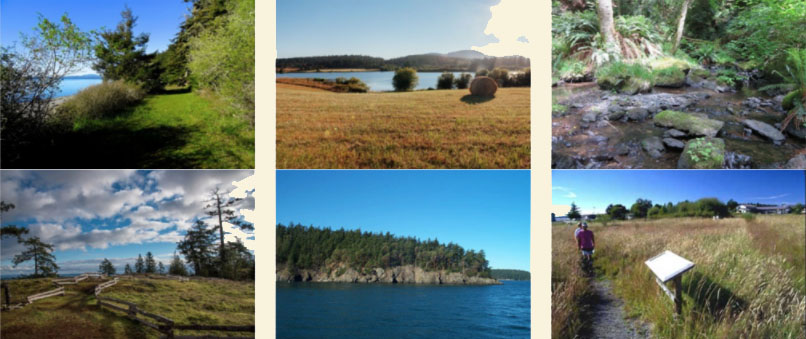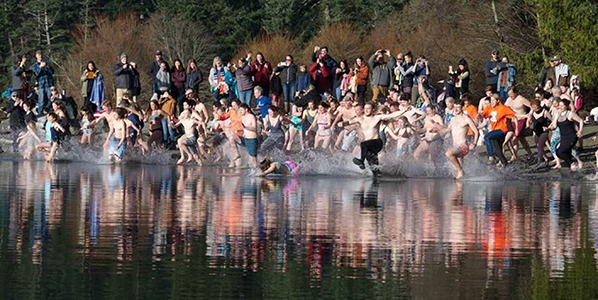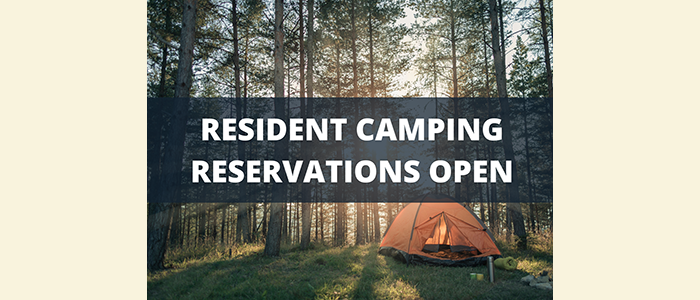–by Erin Smith —
Wildcrafting, when done consciously, is not only an act of sustainability, it is a sacred act.
There are now more than 160,000 national parks, wilderness and other protected areas worldwide. There is little else that says so loudly that as a whole we believe nature is worth preserving and has value in its own right.
And yet, there is a quiet side effect.
Starting at the end of the 19th century with the national park movement, we began to believe that the best way to preserve and protect nature is a “hands off policy”. As a result, we removed ourselves and put nature over there, in outdoor museums. We can go and enjoy these natural art pieces as long as we stay behind the red-ropes or in this case on the marked trails and designated roads. The underlying message has been that nature isn’t to experience; it is to look at.
As a result, we hardly know the world around us anymore. How many can name the trees that shade their street or when the birds return from their winter away? Can we say what is a normal fluctuation in butterfly populations in our area? In a world of shifting climate, the importance of this folk and traditional knowledge is becoming increasing recognized on an international level.
However, knowledge comes from use, from directly interacting with the natural world around us. The minute we stop living in direct contact, this knowledge starts to disappear. The longer we view nature from behind the red ropes, the more our deep understanding fades. But we also lose something deeper and ultimately even more important – we lose connection and awareness of our place in the greater whole.
But as many great ethnobiologists, including Nancy Turner, M. Kat Anderson, and others have demonstrated, humans have evolved with nature and also have a vital role to play in the health of the environment. But like other parts of nature, we can get out of control. Currently, we are one of the worst invasive species.
Taking ourselves out of the game completely is not the answer.
As we are seeing today, over a century of viewing nature from afar, has led to mass amnesia of our role in the great web of life and a disastrous disconnect from the results of our actions – the health of the environment and our personal emotional and physical health are plummeting.
There is another way. We need to raise the ropes and step lightly on the earth again. We need to kneel and place our nose to the earth and inhale. We need to re-cultivate our relationship with the natural world. Because when we play our part in proper balance, we are essential to the greater whole.
The best way to re-establish our connection and relationship with the natural world is through use. Conscious use of our natural resources helps us to remember our place in nature and to understand our part in the natural cycle. History has shown that without this awareness, we quickly allow things to go out of balance and act not with nature but against it.
For all of these reasons, wildcrafting, when done consciously, is not only an act of sustainability, it is a sacred act.
It is an act that inspires “awe and respect.” Because where there is a deeper relationship, there is respect. Where there is respect, sustainability is not something to reach for but a way of being.
So what does this look like in practice?
There are common principles present in every indigenous culture I’ve worked with over the years. How these principles are practiced is as beautiful and diverse as the cultures that hold them, but the intention that underlies all of these practices is the same – right-relationship with the natural world. While these practices are most prevalent today in traditional communities around the world, these are not only indigenous practices. They are human practices.
Next time you harvest your favorite medicinal plants, hunt, or even harvest water, try incorporating these three practices. Regular use of these practices will help deepen your relationship to nature and cultivate our innate human awareness of our place in the greater whole.
Take Only What You Need
This is the most important rule and also the most difficult. Even for seasoned herbalists and foragers! We all get excited when we find great medicine and great wild foods and want to harvest as much as we can because 1) we love it so much, 2) we are not sure when we will find it again, and 3) we are afraid we won’t have enough (the classic “what if?”).
But it is important to learn to really tune in and honestly take only what you need. This not only insures the health of plant population (what if everyone takes all they can? Soon there will be nothing left!), but is also a very important lesson in remembering our deeper relationship with the natural world. It allows us to build trust and respect. In showing restraint, we are showing that we value the rights of these plants (and nature as a whole) to exist outside of their usefulness to us. We acknowledge that our use of them is not a right but a gift.
It also allows us to build trust. Trust that there will be enough. Trust in the cycles of nature and that come next year, they will be there again for us to harvest what we need. So I offer that even in our excitement that we see wildcrafting as a ritual, as an act of reverence, and as meditation and a prayer in its own right.
In addition, skip over a plant that is being enjoyed by the bugs or butterflies. Perhaps even a hummingbird. This helps to reinforce the knowledge that there are other creatures sharing this bounty with us.
Now “what you need” is different for everyone. But think honestly in your heart before harvesting and ask these questions: Am I harvesting for my own use? For my family? Do I need some for clients or my community? Are there types of medicine I can make that will help it last longer? Is it for one year? Will I have access to this again? And harvest (following the other rules) what is true to you.
Ask Permission
In many cultures, experienced harvesters have an intimate knowledge of the plants and which ones are “ok” to take and might not verbally (or mentally) ask permission before doing so. However, this permission has been established over many years through intimate knowledge of the plant populations in their area. The “permission” comes from their knowledge of the health and maturity of these populations as well as a more intuitive connection and permission received from the plants themselves.
When you are starting to harvest it is good practice to ask the plant permission before harvesting. This “permission” can come in many forms. Some physically ask the plant and then tune into what they feel is the proper way to proceed. If they get the “feeling” this is ok, then they proceed. If they feel hesitation then they trust this and move on. Another way of getting permission is just by reading the plant patch you want to harvest from. Does it look healthy? Is it abundant? Can you see clearly areas where you could harvest without damaging the plant or the population? If you can say yes to these questions, in general is it probably ok to harvest.
Gratitude
Most indigenous and other traditional cultures around the world make an offering before they harvest plants or hunt. It is a way of acknowledging that you are receiving something and to give thanks in exchange for this gift. In some cultures, it is a particular prayer that is said, in others a particular ritual, and in some there is a hunting or harvesting song. And in yet others it is a physical offering that is given before harvesting or hunting – a bead, a shell, tobacco, corn, etc. In most cultures, included in some way in this offering is also an explanation for why it is needed. If medicine is harvested, the plants are told this and asked to help in the healing. Animals are told that they are needed to feed a family or a community.
The exact form of the offering is not important. What is important is the intention and the acknowledgement that you are taking another life form. It is again a way of recognizing that this is not a right but a gift. It is a way of acknowledging our place as a part of nature rather than outside and above it. Find a way that feels good to you to give thanks. It can be that you sing a favorite song of yours while you harvest, you can leave a bit of tobacco or corn meal, you can say a prayer, or you can even give it a bit of water.
Or simply, say thank you.
Erin Smith is the daughter of Alan and Sara Smith
**If you are reading theOrcasonian for free, thank your fellow islanders. If you would like to support theOrcasonian CLICK HERE to set your modestly-priced, voluntary subscription. Otherwise, no worries; we’re happy to share with you.**








Thank you for this! Respecting the Life Force within plants and all other life forms is honoring All of Creation!
Spirit Eagle
The Truth of God, is that we are all One Being, interconnected forever. What happens to your neighbor, happens to you. What happens to the Earth, happens to you. What happens to the air, happens to you. What happens to the waters, happens to you. We are inextricably connected with All Of Life!!!
So, Do No Harm must take precedent in our lives if we want to be healthy and happy and Whole. Strive to be in Balance with all living things!! God is all of us, interconnected. We make IT up! and at the fundamental level, which I might call the Heart of God, we are all totally aware of that Oneness! The Being we all make up, sees All as itself. The is the cosmic consciousness, in which we are synapses of life, sparkling through reality.
This is the Truth humanity has Lost! and we must find it again if we intend to keep living and thriving on this planet.
The Whole Galaxy, is conspiring in our favor, for us to live, to survive, to become the conscientious beings we are meant to be.
Dare to Live! Be the Truth! Your Light and Open Hearts are needed Now.
Turn your hearts toward the Light, and Live for the Universe, live for As All, Live for Greater Self.
-Domenic